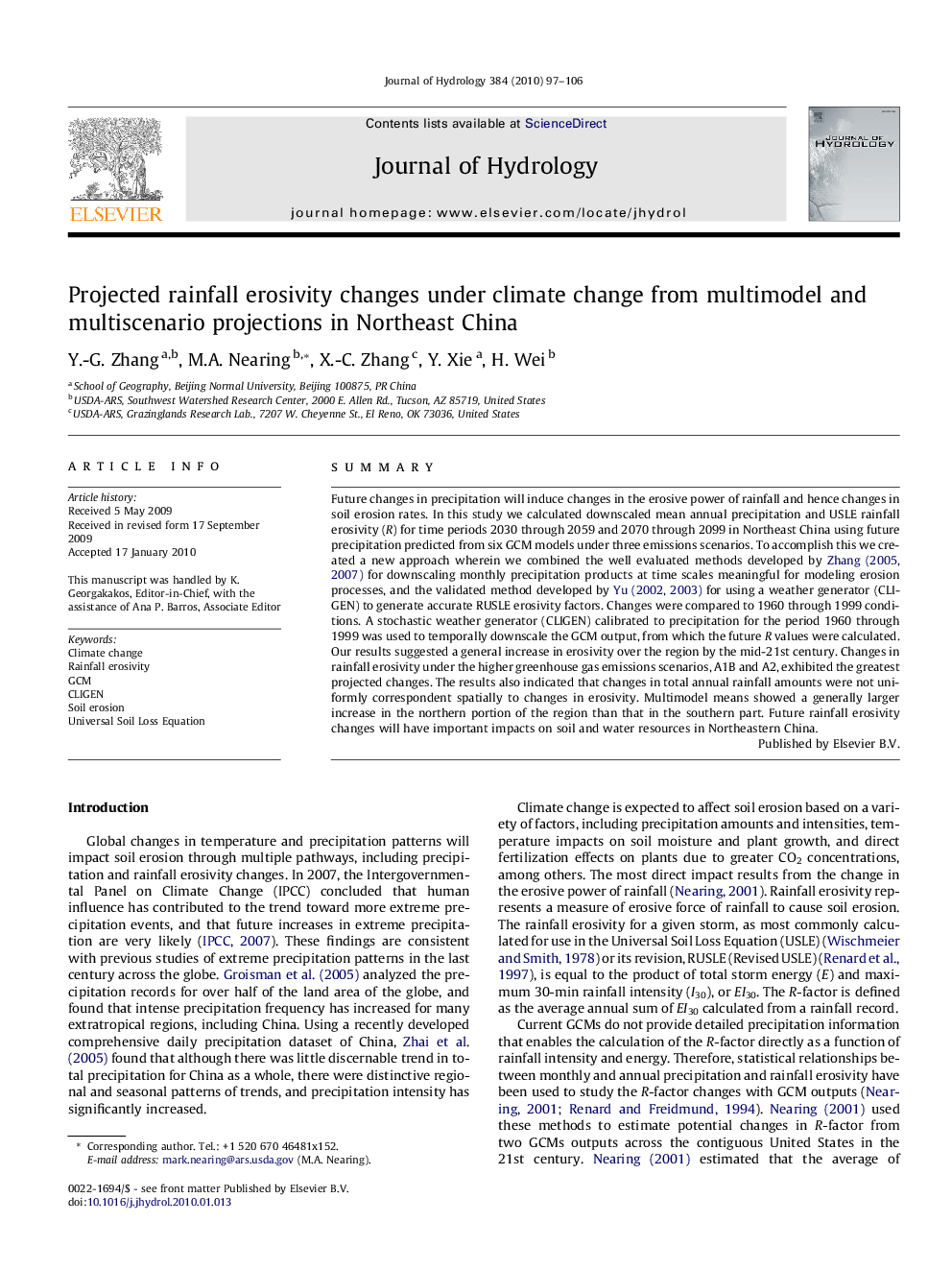| Article ID | Journal | Published Year | Pages | File Type |
|---|---|---|---|---|
| 4578396 | Journal of Hydrology | 2010 | 10 Pages |
SummaryFuture changes in precipitation will induce changes in the erosive power of rainfall and hence changes in soil erosion rates. In this study we calculated downscaled mean annual precipitation and USLE rainfall erosivity (R) for time periods 2030 through 2059 and 2070 through 2099 in Northeast China using future precipitation predicted from six GCM models under three emissions scenarios. To accomplish this we created a new approach wherein we combined the well evaluated methods developed by Zhang, 2005 and Zhang, 2007 for downscaling monthly precipitation products at time scales meaningful for modeling erosion processes, and the validated method developed by Yu, 2002 and Yu, 2003 for using a weather generator (CLIGEN) to generate accurate RUSLE erosivity factors. Changes were compared to 1960 through 1999 conditions. A stochastic weather generator (CLIGEN) calibrated to precipitation for the period 1960 through 1999 was used to temporally downscale the GCM output, from which the future R values were calculated. Our results suggested a general increase in erosivity over the region by the mid-21st century. Changes in rainfall erosivity under the higher greenhouse gas emissions scenarios, A1B and A2, exhibited the greatest projected changes. The results also indicated that changes in total annual rainfall amounts were not uniformly correspondent spatially to changes in erosivity. Multimodel means showed a generally larger increase in the northern portion of the region than that in the southern part. Future rainfall erosivity changes will have important impacts on soil and water resources in Northeastern China.
